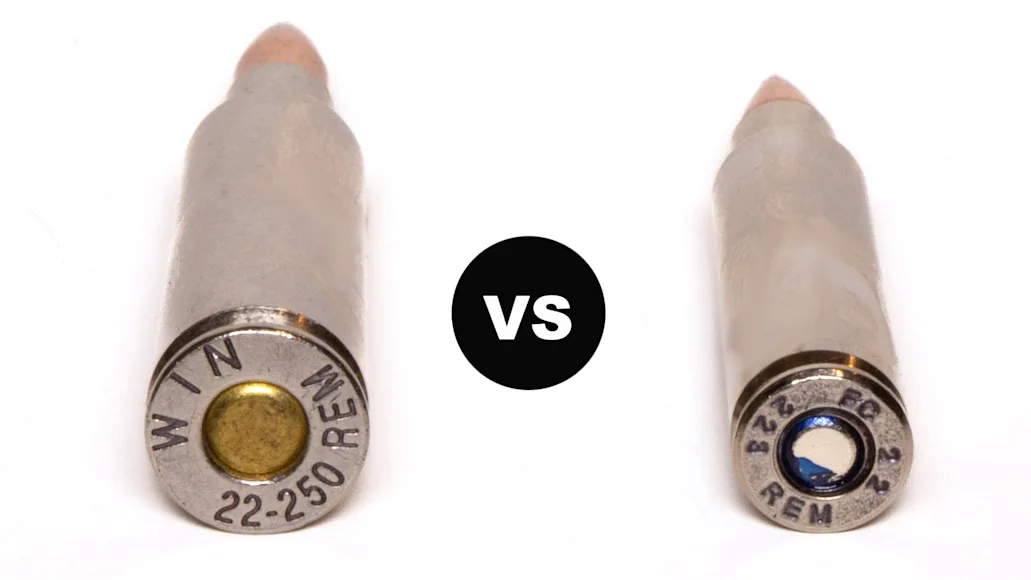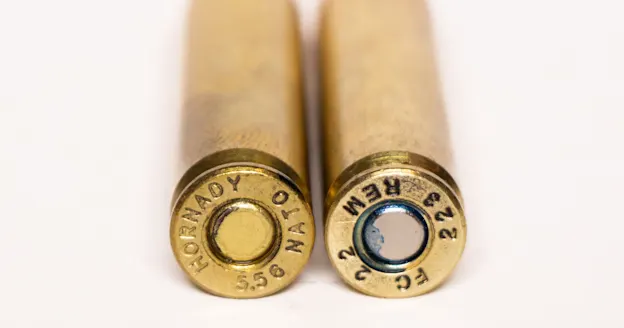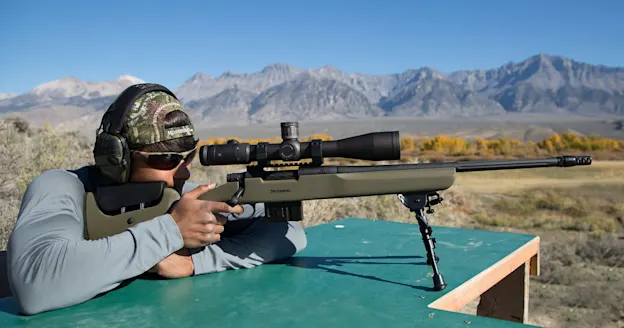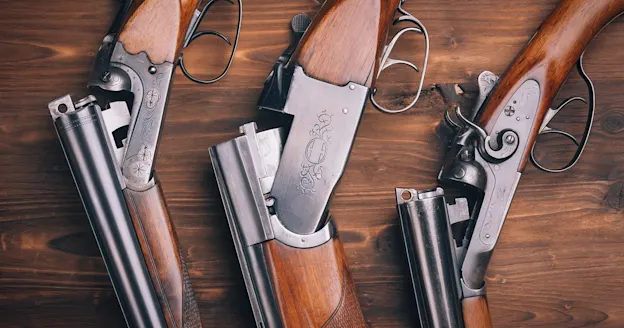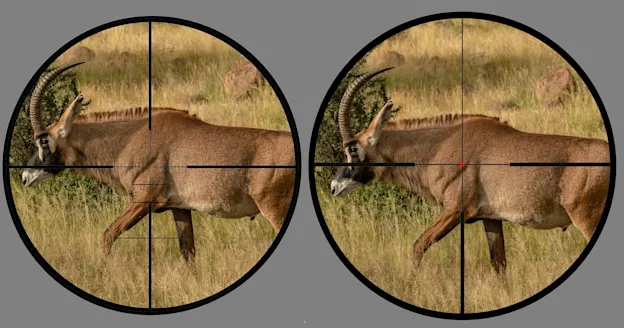_We may earn revenue from the products available on this page and participate in affiliate programs. Learn more ›
_
The 22-250 vs 223 is a great cartridge comparison because both use the same diameter bullets and both are stellar choices for varmint and predator hunting
. The 22-250 Remington is the older cartridge, but it’s also the fastest. The 223 Remington is much more prolific and a bit more versatile. To make the choice that’s best for you, you not only need to consider ballistics, but you also need to compare energy and recoil, trajectory and wind drift, and something that is often overlooked when comparing rifle cartridges, and that’s rifling twist rate. We are going to look at all of those things and more here, but let’s start with a basic 22-250 vs 233 tale of tape.
22-250 vs 233 Basic Comparison
The 22-250 is the slightly larger cartridge in just about every way: it’s a little longer than the 223 both in terms of case size and overall length, and the rim diameter is significantly wider, making for a fatter case that holds more powder to send bullets of roughly the same size or slightly smaller downrange at faster speeds. The 223 is no slouch, but the 22-250 is built to be a screamer. The 223, on the other hand, with its wider range of bullet weights and compatibility with many more modern rifles, is designed to be more practical and versatile.
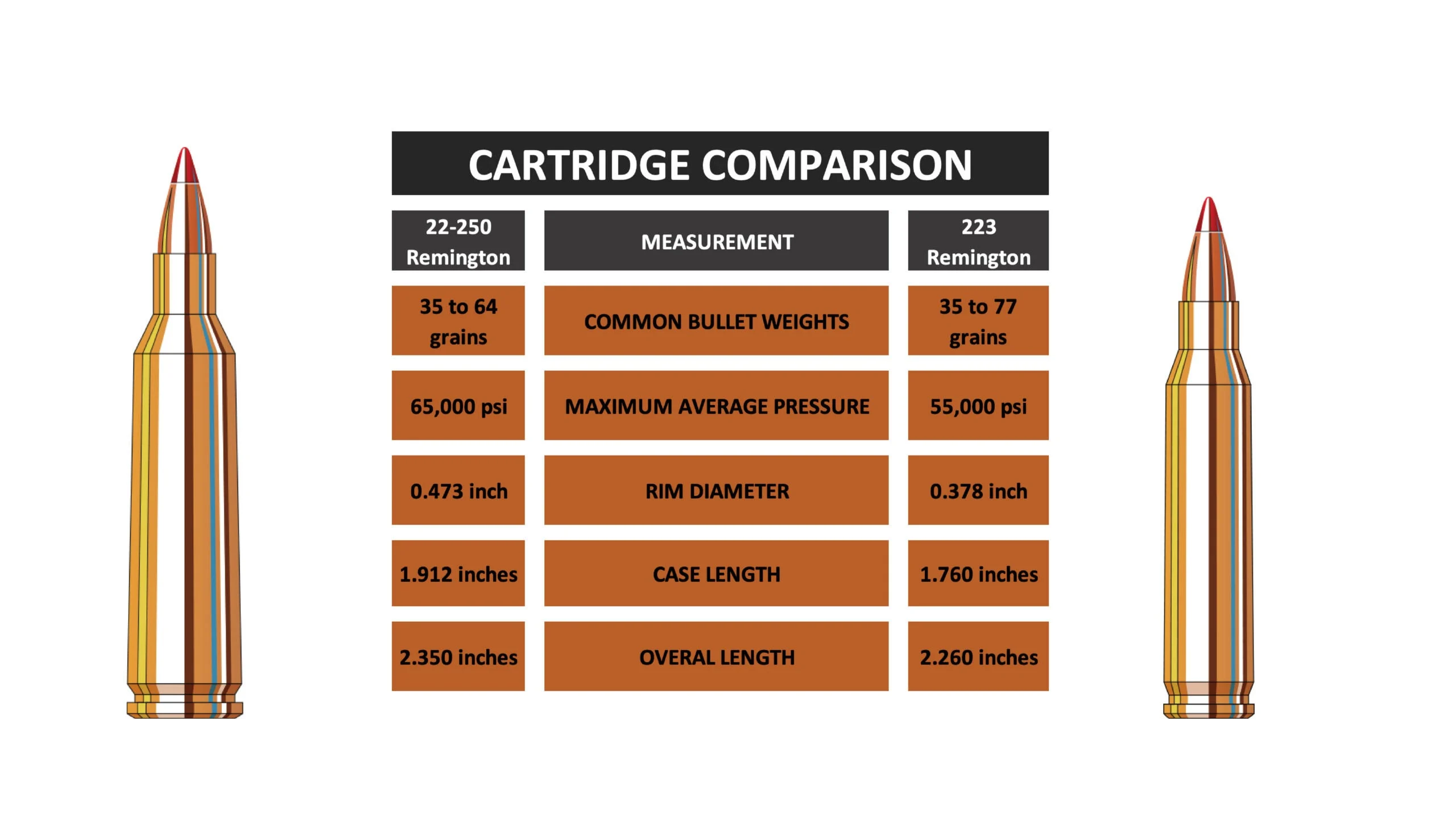
Richard Mann
22-250 Remington Overview
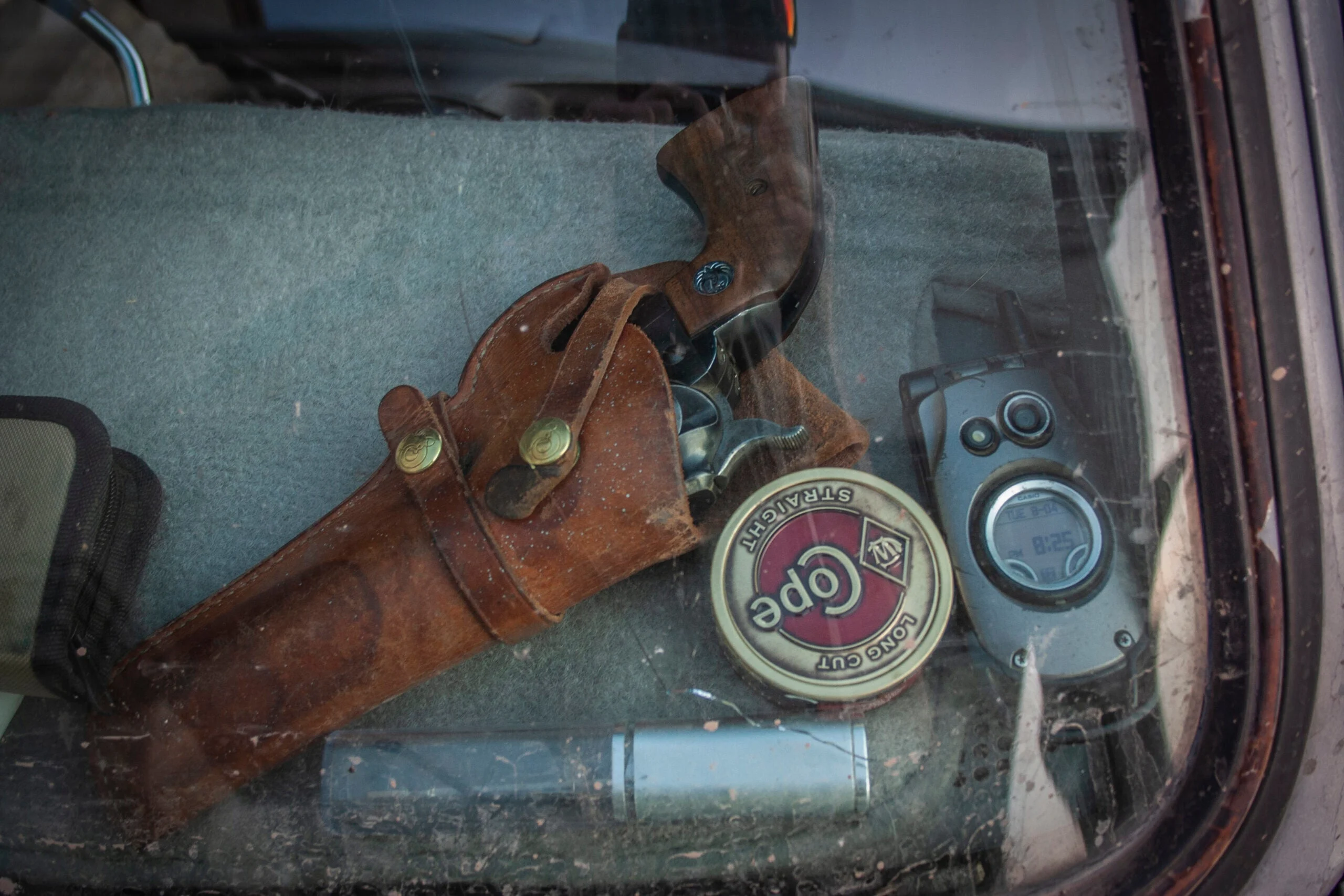
At one time the 22-250 Remington was king of the varmint cartridges. Its claim to fame was muzzle velocities exceeding 4000 fps. Richard Mann
Remington introduced the 22-250 in 1965, but it had been a popular wildcat cartridge for about two decades. This was mostly because it could push bullets faster than 4000 fps. To this day, the only faster commercial cartridge is the almost forgotten 220 Swift. The 22-250 got the first part of its name from the 0.224 caliber (22-caliber) bullet it fires, and the second part because its cartridge case is a 250 Savage case necked down to 22. Up until the beginning of the 21st Century, the 22-250 was arguably the king of varmint cartridges, but with the proliferation and modularity of the AR-15, it began to lose its luster to the 223 Remington and other AR-15-compatible cartridges like the 22 Nosler and 224 Valkyrie.
Though mostly thought of as a cartridge for sniping woodchucks and whacking coyotes, the 22-250 is a legitimate deer round loaded with the right bullet. A farmer who lives next to my hunting camp has used a 22-250 for deer hunting for as long as I can remember. Some consider the cartridge too small for deer, but my friend would disagree, and he has the antlers to support his argument. As effective as the 22-250 can be on deer, its true forte is taking varmints and predators. I’ve done a lot of groundhog hunting, killed some coyotes, and even taken a few deer with the 22-250, but today, new 22-250 rifle options are limited.
223 Remington Overview
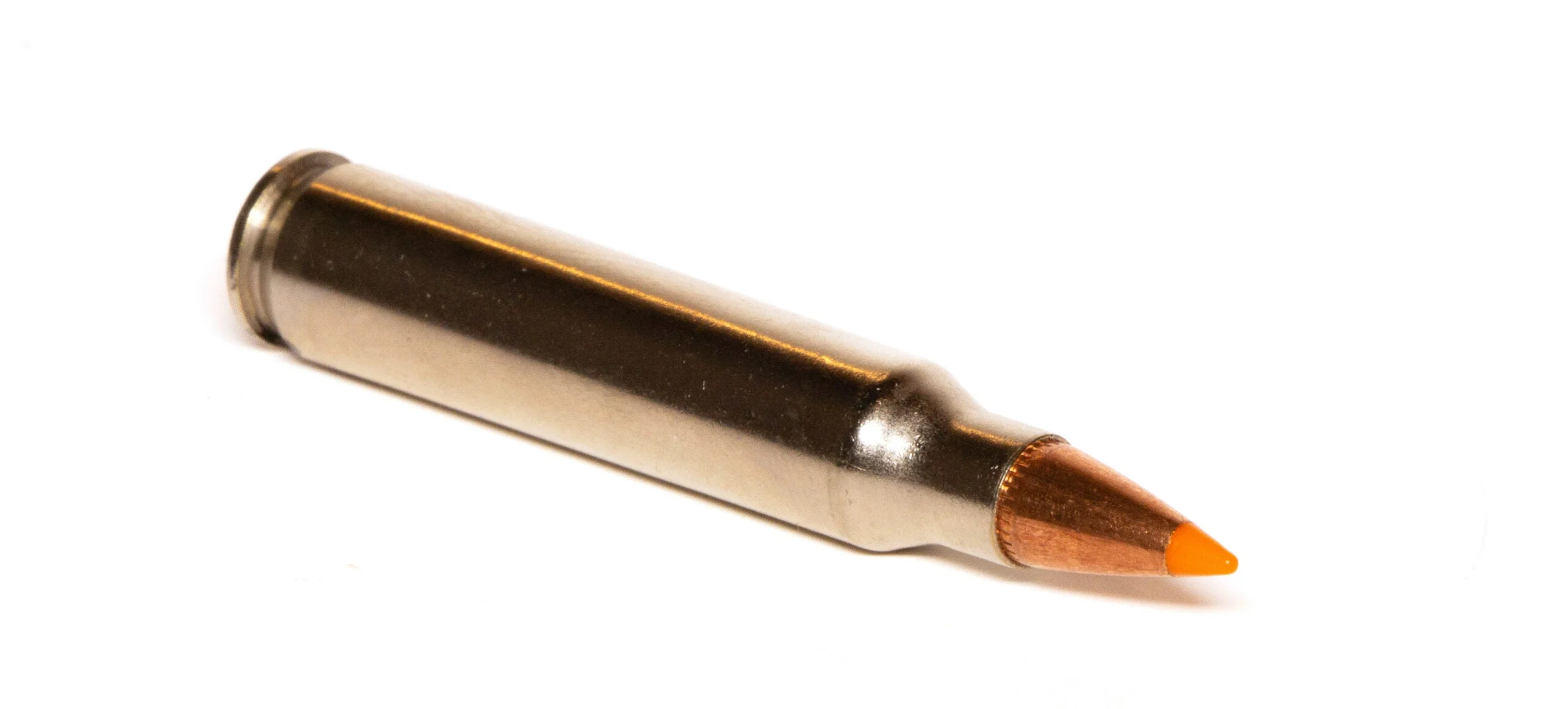
The 223 Remington is without question the most popular 22-caliber centerfire rifle cartridge in existence. Richard Mann
Introduced at about the same time as the 22-250, the 223 Remington was slower in velocity and slower to find mass appeal. Surprisingly, the first rifle Remington offered in 223 Remington was their pump-action Model 760. Also, many who liked the ballistics of the 223 Remington already owned the much revered 222 Remington, which had been around since 1950. However, in 1974, Ruger introduced the Mini-14 semi-automatic rifle in 223 Remington. With that rifle and the ever growing appeal of the AR-15, the 223 Remington had made almost everyone forget about the 222 and 22-250 by the turn of the century.
The 223 Remington’s similarity to its 5.56 NATO military counterpart
, its suitability for recreational, competition, and self-defense applications, as well as for hunting predators, varmints, and smallish big game, has made it the most popular centerfire rifle cartridge in America. Because there are so many different types of rifles chambered for it, and more than 100 factory loads to choose from, it’s easy to see why so many shooters choose it. I’ve used the 223 in about every way it can be used. In fact, it’s my most used centerfire rifle cartridge.
22-250 vs 223: Ballistics
The 22-250 and 223 fire the same-diameter bullet, but oddly, in factory ammunition you’ll find heavier bullets loaded for the less powerful 223 Remington. We’ll get to the reason for that shortly, but what you mostly need to know is that given the same bullet weight, you can expect 22-250 Remington velocities to be between 10 to 15 percent faster than the 223 Remington. Though you might expect more of a ballistic benefit, this extra velocity only gives the 22-250 about a 50- to 100-yard advantage in terms of trajectory, impact energy, and terminal performance. This is mostly because of the low ballistic coefficients (BC) of 22 caliber bullets, which means that they lose velocity fast.

Richard Mann
Differences in Trajectory and Wind Drift
With both cartridges firing the same bullet, trajectory and wind drift comparisons are easy to make, but they can also be a bit misleading. The chart below shows that a 55-grain bullet from a 22-250 will drop about 39 inches at 500 yards, which is 14 inches less than the 223 Remington. However, after traveling only an additional 55 yards, the 22-250 bullet has the same amount of drop at 555 yards as the 223 Remington bullet has at 500 yards. Laser rangefinders make trajectory easy to correct for, but proper wind drift correction depends on precise estimations, and the faster velocity of the 22-250 makes it a bit more forgiving. Estimate a 15 mph wind as a 10 mph wind, and at 400 yards you’ll see about 8.5 inches of additional drift with the 22-250, but 11.5 inches more with the 223.

Richard Mann
22-250 vs 223: Energy and Recoil
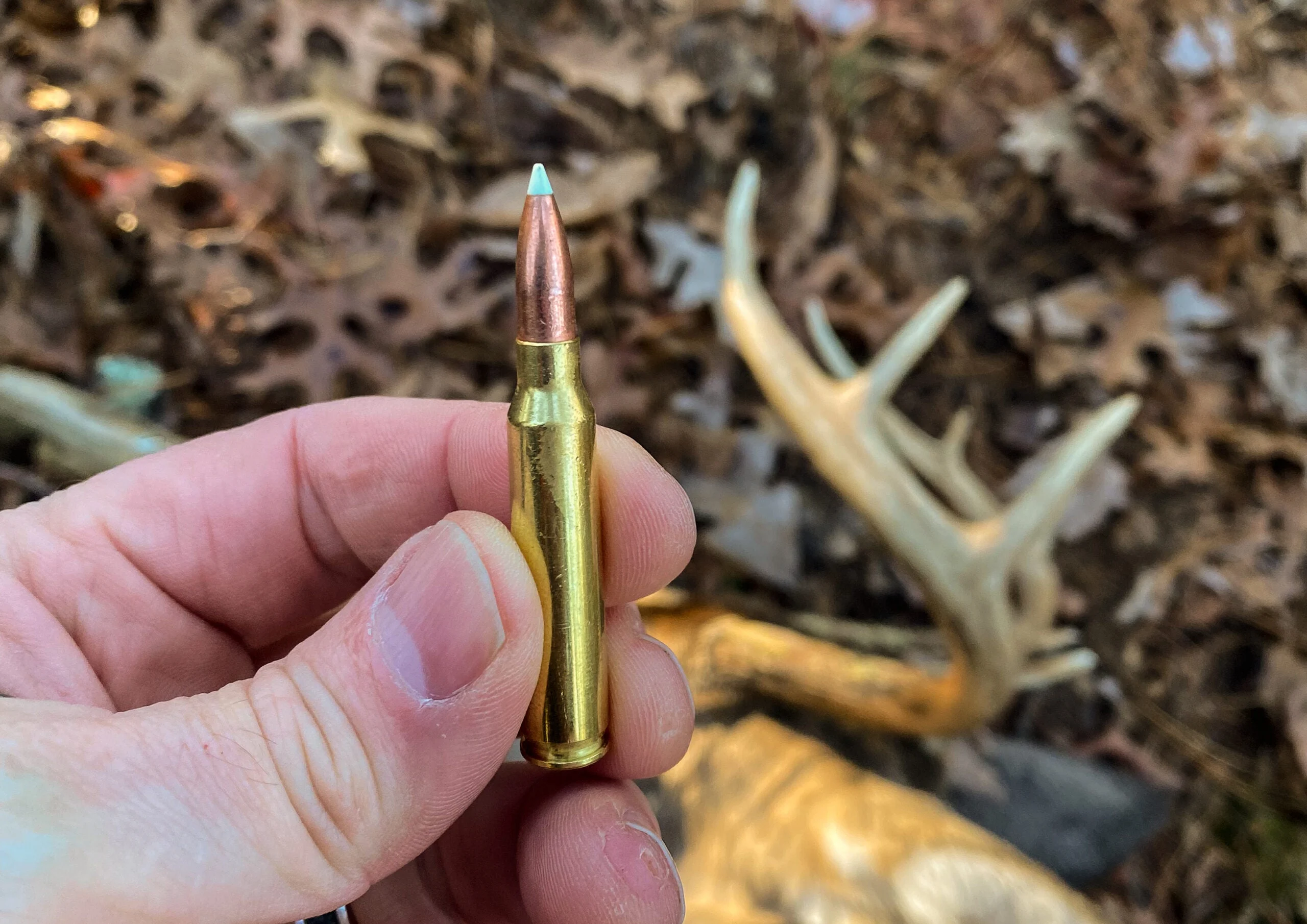
With modern premium bullets, like the 70-grain AccuBond, the 223 Remington will work just fine on deer. Richard Mann
Energy on target is a result of impact velocity and bullet weight, and when comparing bullets of the same weight and design impacting at the same distance, the 22-250 can hit 30 percent harder than the 223 Remington. This helps make the 22-250 more explosive on varmints and also enhances terminal performance on larger game when premium bullets are used. But it also increases recoil. Out of the same weight rifle, the 22-250 will recoil about twice as hard as a 223 Remington. Neither cartridge has offensive recoil, but you if hope to see your bullet impact at distance—which is a big help when shooting prairie dogs and the like—it can be very hard to do with a 22-250.
Differences in Twist Rate and Bullet Weights
Rifling twist rate is why you’ll see heavier bullets in factory 223 Remington ammo. It’s also where the comparison of the 22-250 vs 223 cartridges gets complicated. The 22-250 was initially offered with a 1-in-14 twist and the 223 Remington with a 1-in-12 twist. Both twist rates will stabilize bullets of about 60 grains. But with the popularity of the 223 Remington, and the trend to load it with longer and heaver bullets, manufactures started offering 223s with twist rates as fast as 1-in-7. Because of this, factory 223 ammo is available with bullets as heavy as 77 grains.

The 22-250 is one of the fastest-stepping varmint cartridges of all time, but over the years it has been hindered by slow rifling twist rates. Richard Mann
Recently, manufactures have started offering 22-250 rifles with faster twist rates but check before you buy. Mossberg’s Patriot Predator in 22-250
still comes with a 1-in-14 twist. Ruger’s 22-250s
are twisted a bit faster at 1-in -10, and most modern Browning’s have a 1-in-9 twist to make these rifles compatible with the modern, heavy, and high-BC bullets. That’s great for handloaders, but of the 30 some factory 22-250 loads available, the heaviest bullet weight offered is only 64 grains, and the highest BC bullet is listed at only 0.270. With the 223 Remington there are lots of 77-grain factory loads, and some use bullets with a BC as high as 0.416. Even at the modest muzzle velocity of 2850 fps, these high BC bullets can drift as much as 20 percent less in the wind than much faster 22-250 factory loads.
22-250 vs 223: Picking a Winner
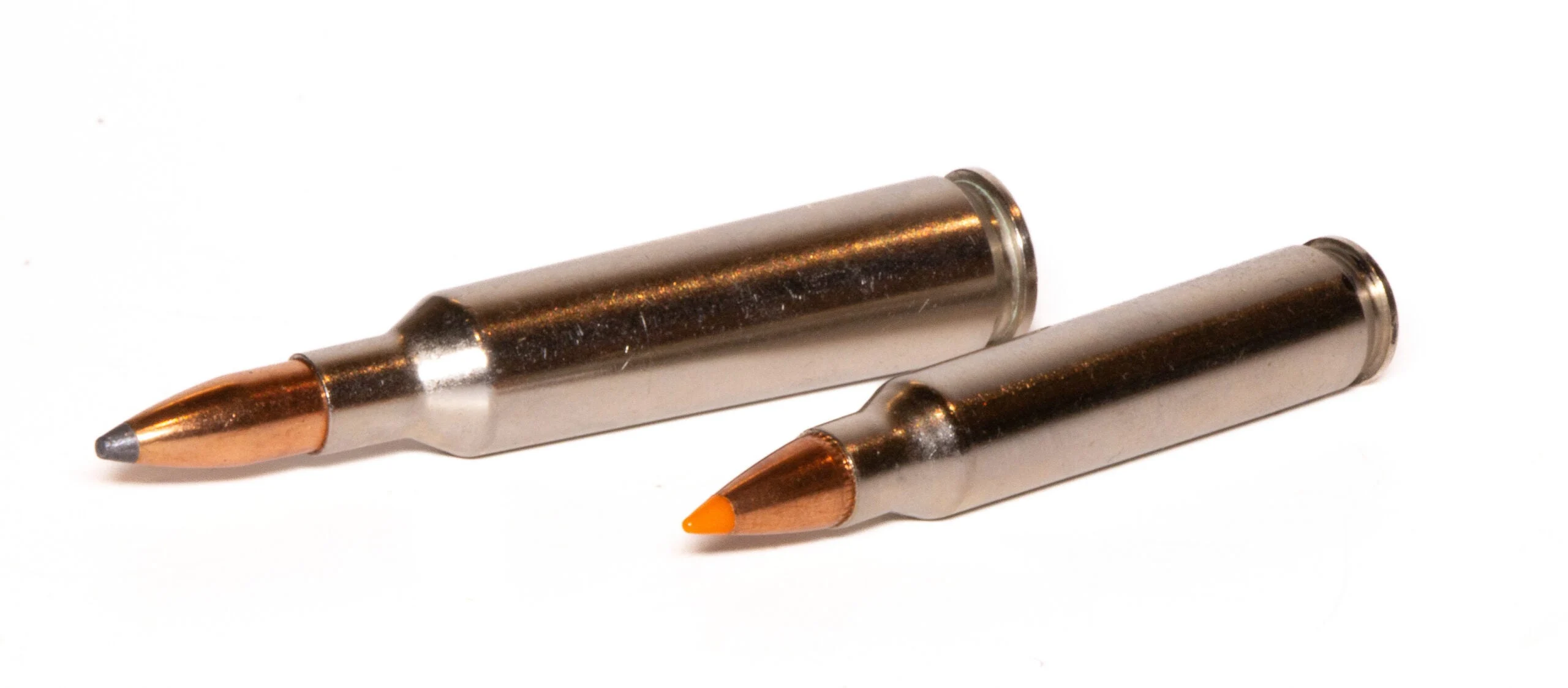
The 22-250 Remington (left) is a great varmint cartridge, but today it’s not as popular as the 223 Remington. Richard Mann
If you have a need for speed, the 22-250 is clearly the better option. However, if you want to shoot bullet weights heavier than 65 grains, you’ll have to load your own ammo and make sure your 22-250 rifle has a fast-twist barrel. If you want a 22-caliber centerfire rifle that’s a semi-automatic, the clear and obvious choice is the 223 Remington. The same is true if you want a rifle with a wide selection of factory ammunition.
About the only reason I would choose a 22-250 Remington over a 223 Remington is if I wanted a moderately heavy—too offset recoil—bolt-action rifle for varmint hunting at extended range. For everything else, I’d go with the 223 Remington. The 223 Remington does not have the speed of the 22-250, but in the world of 22-caliber centerfire rifles, the wide variety of 223 rifles and factory ammunition to choose from, make it the new king. It’s been nearly 20 years since I owned a 22-250 rifle, and I don’t expect I’ll ever own another one.

